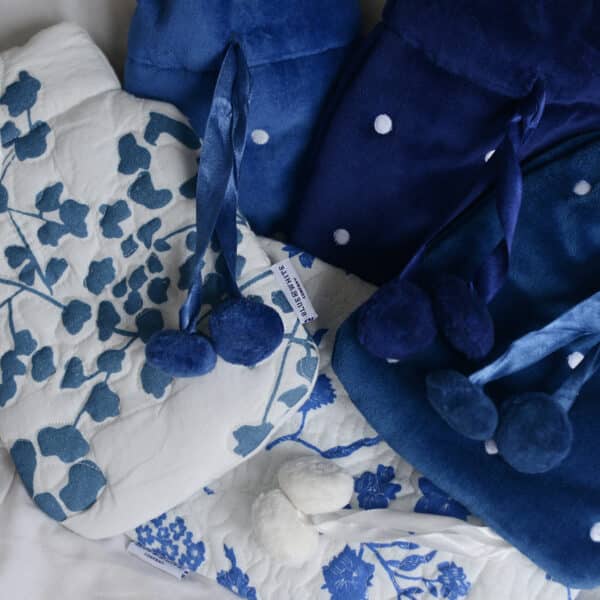Sandro Botticelli’s Mystic Nativity
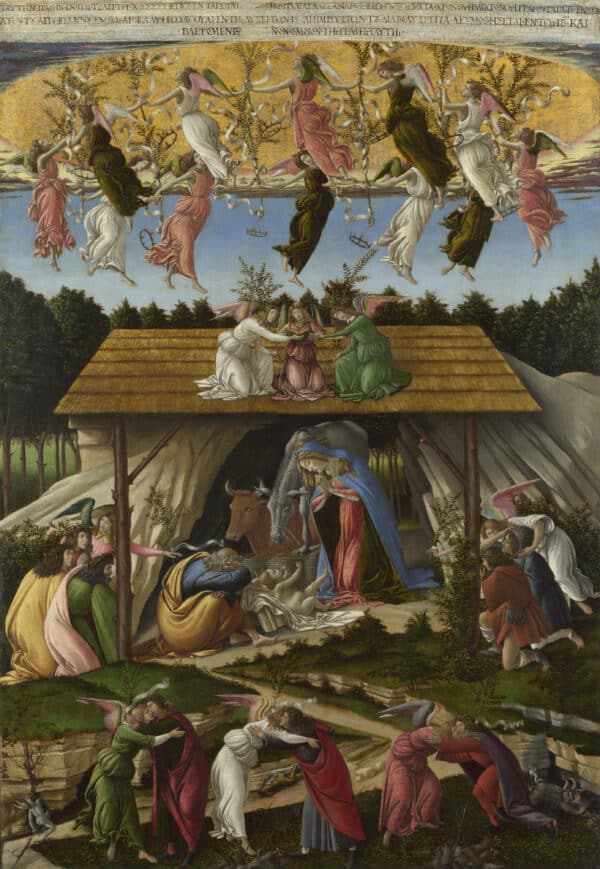
Mystic Nativity, Sandro Botticellie c.1499-1500, Oil on Canvas, National Gallery London
As Christmas approaches, we thought we would look at one of art history’s more unique depictions of the Nativity scene. Sandro Botticelli’s Mystic Nativity hangs in the National Gallery in London and is a composition filled with symbolism indicative of much more than the classic scene of Christ’s birth.
Sandro Botticelli: A Brief Biography
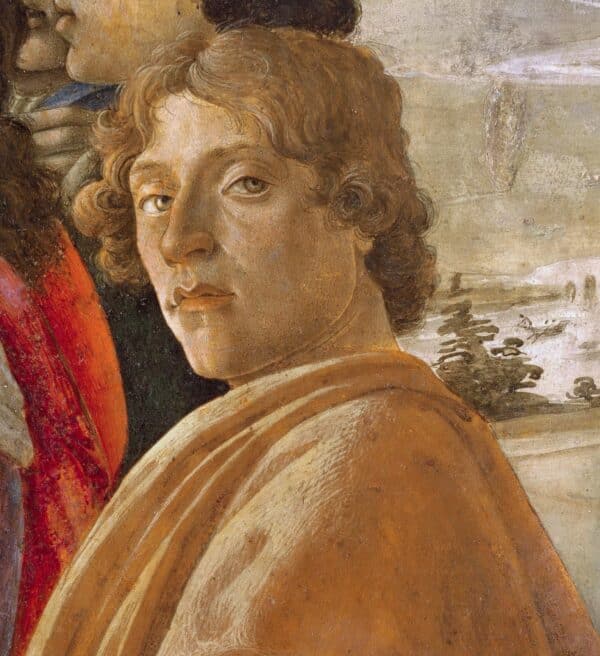
Botticelli Self Portrait, Extract from Adoration of the Magi, 1475
Known for his incredible, life sized representations of mythology, his intricate altar pieces and his graceful handling of the human form, Sandro Botticelli (c. 1445-1510) is one of the most highly regarded painters of the Florentine Renaissance.
An apprentice of Fra Fillipo Lippi, Botticelli was a well connected and esteemed artist by the time he had his own studio in 1470. Not only did he work for Florence’s elite, such as the Medici family, he was also summoned to Rome to help decorate the Vatican and produce Papal Portraiture.
Throughout his lifetime he created some of the world’s most beautiful pieces of art. However, in the latter half of his life the socio-political crises that befell Florence appeared to impact Botticelli’s outlook and his art in a more serious and contemplative way.
Savonarola and the Bonfire of the Vanities
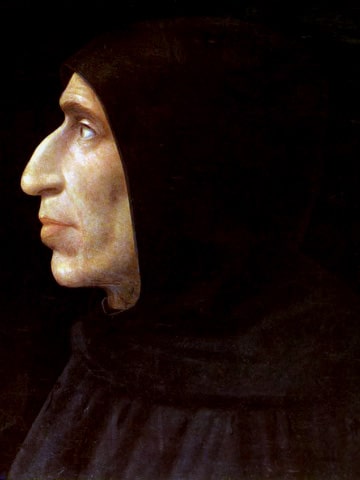
Portrait of Savonarola, Fra Bartolomeo
In the decade before the creation of Mystic Nativity, Botticelli became a follower of Girolamo Savonarola. Savonarola was a Dominican friar and preacher whose overt desire for power and control of Florence meant the strictest piety was forced upon the city. Savonarola led a tirade against all things luxurious, pronouncing them vain and impious.
He famously conducted the ‘bonfire of the vanities’ in 1497, during which endless luxuries, including many beautiful artworks, were publicly burnt. In turn, this intensified Botticelli’s concern over the work he was producing and had already produced, along with many other Florentine artists. Eventually, Savonarola was tried and condemned as a radical heretic leading to his execution in 1498, leaving Florence in a state of unrest.
Influenced by Savonarola, troubled by his home town’s enduring conflict and the banishment of the Medici, Botticelli moved away from the gossamer beauty of his earlier work and began producing religious works full of symbolism. Often, these would emulate the intense preachings of Savonarola and, in the case of Mystic Nativity, captured Botticelli’s own inner conflict regarding his life’s work. It led to him questioning his faith and whether or not the beauty he once sought to capture really glorified God in the way he once thought it did.
The Mystic Nativity by Sandro Botticelli
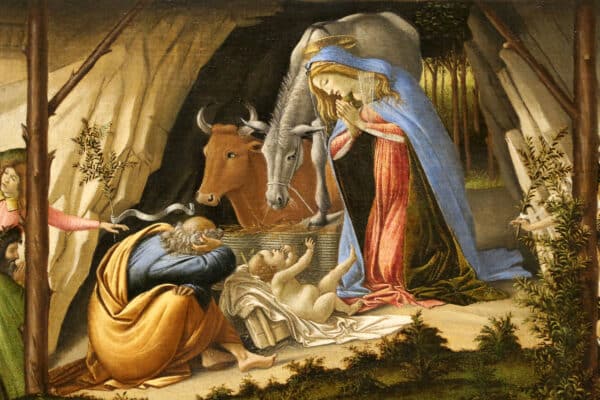
Mystic Nativity Extract, Author: Sailko
Knowing the socio-political and personal context behind Botticelli’s fascinating nativity scene allows us to understand the individual and unusual elements of Mystic Nativity.
Painted in c.1500 this particular depiction of Christ’s birth is made up of both plays on traditional imagery as well as less than usual symbolism. Having been described as a visual sermon, the Mystic Nativity is said to represent a specific teaching of Savonarola’s. Above the composition an inscription speaks of the ‘the troubles of Italy’ but also the second coming of Christ and how his arrival will return the demons to hell.
The Different Symbolism of the Mystic Nativity
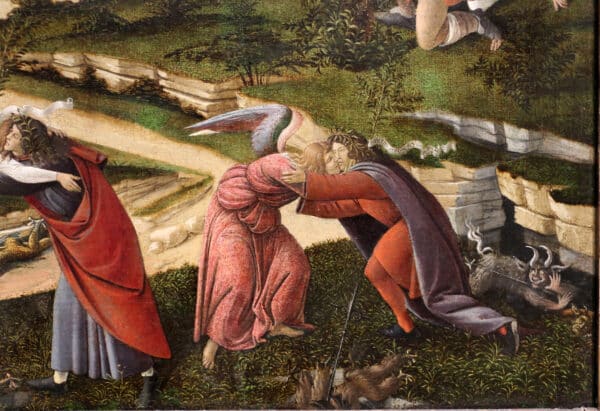
Mystic Nativity Extract, Author: Sailko
Divisible into thirds, the upper part of the oil on canvas shows the golden globe of heaven opening above the scene below. Twelve angels, holding olive branches, seem almost to dance as they evoke the jubilation caused by the arrival of the Son of God. Angels are found throughout the entire piece, in far greater numbers that is generally expected.
Below them, in the central third, the infant Christ reaches out to his mother, dressed in her traditional blue mantle. The thatch roofed structure that acts as the stable is set against a backdrop of cave and forest. The shepherds appear on the right and the three kings (who are interestingly not bearing gifts) on the left.
In the bottom third of the painting, like the apocalyptic message written at the top, a more unusual subject matter for the Christmas narrative is included. Besides the next group of figures where men embrace more angels, in this section horned devils and demons can be seen fleeing the scene and disappearing into the underworld. An unlikely motif but one that actually seems to imply a sense of optimism from the artist.
Whilst there is no doubt of Botticelli’s negative commentary on Florence’s period of ‘Tribulation’, here the birth of Jesus Christ is ridding earth of its evil and, hopefully, Florence of its turmoil.
Give a Beautiful Gift This Christmas
Happily, unlike Savonarola, here at Blue & White company we love all things that are both beautiful and luxurious! If you are looking for the special Christmas gift for a loved one this festive season, we encourage you to explore our collections. From our own mosaic vases that offer their special style of illumination, to table linen and utensils for your holiday meals, elegant nightwear and warming hotties, stocking fillers and gift vouchers there is a little something for everyone…
